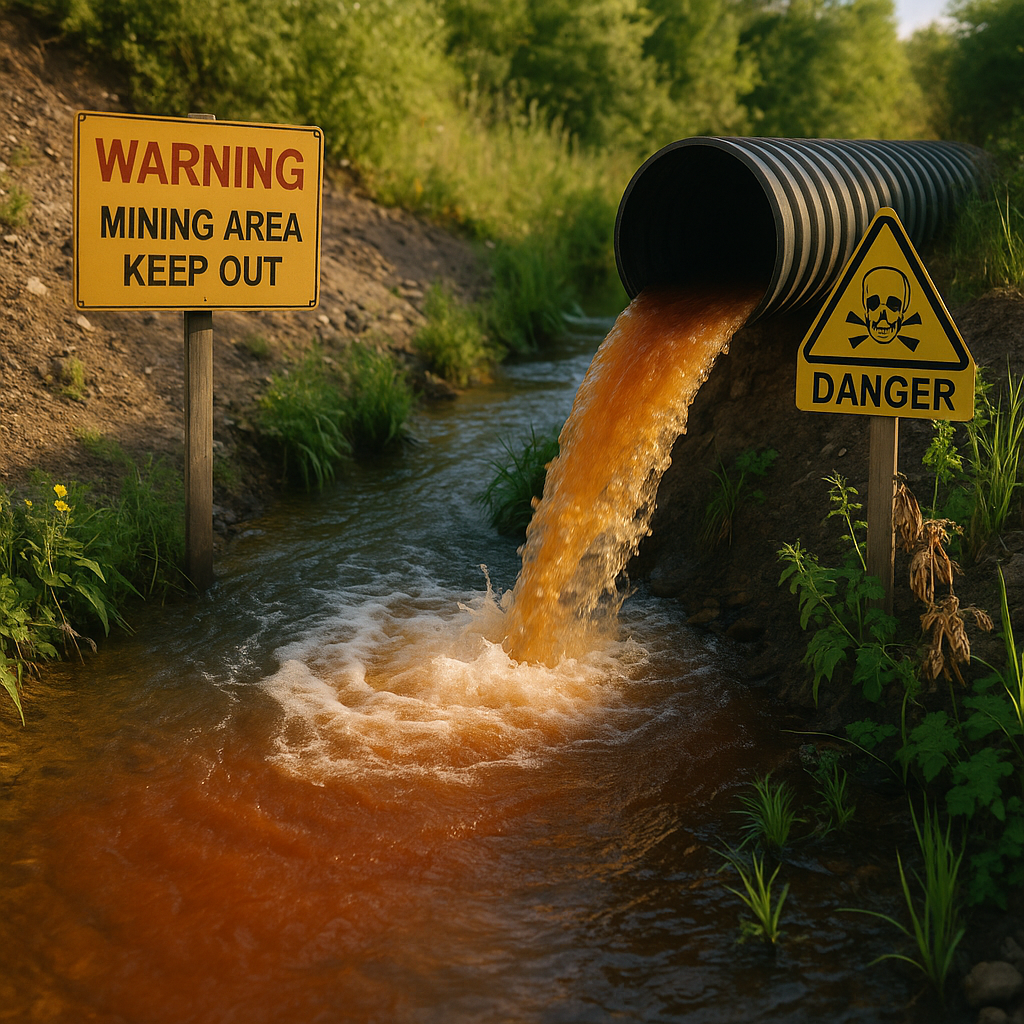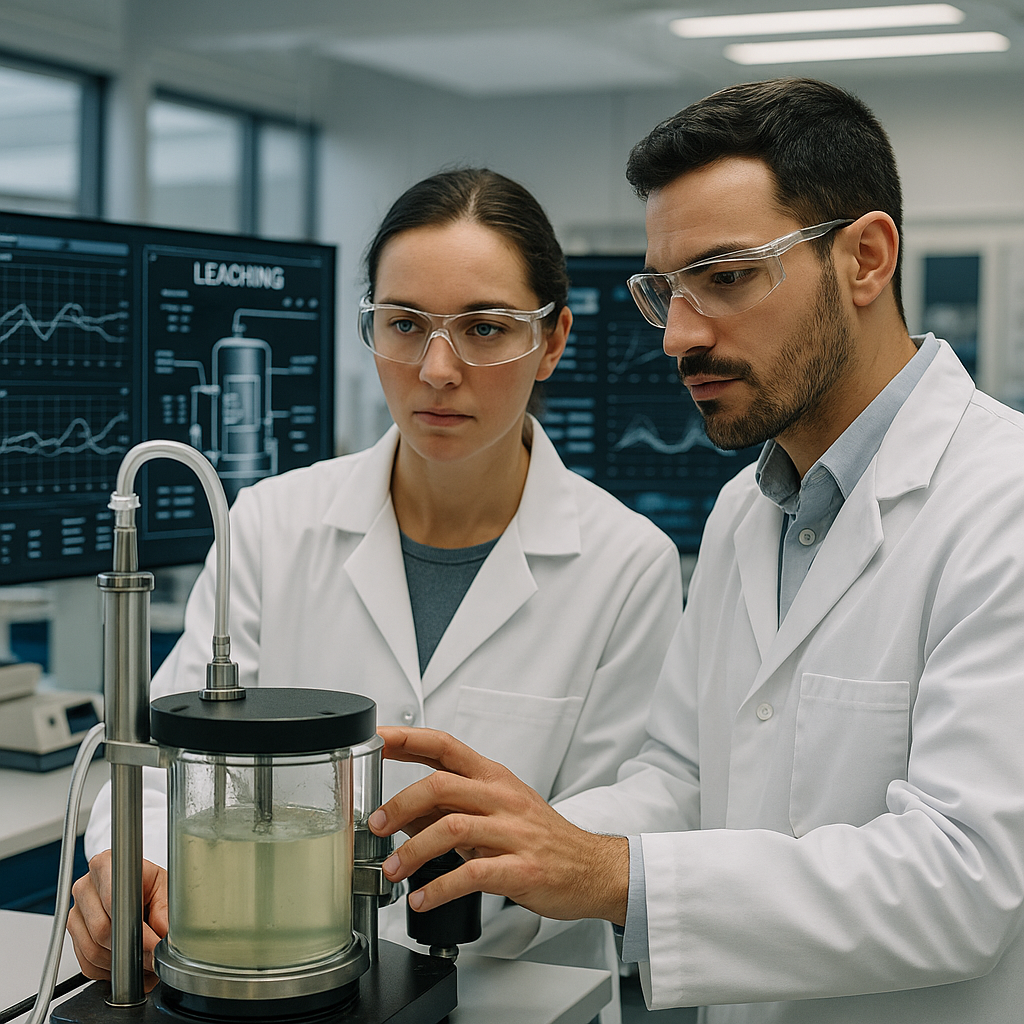5901 Botham Jean Blvd, Dallas, TX 75215
Leaching Process in Hydrometallurgy: Methods, Reactions, and Environmental Impact
October 10, 2025Have you ever wondered how the metals in your smartphone, car, or household appliances are extracted from the earth? The journey from raw ore to pure metal often begins with an intriguing chemical process called leaching. In hydrometallurgy, leaching is the vital first step where valuable metals are extracted from their rocky confinement using liquid solutions, instead of extreme heat.
Leaching is essentially a dissolution process that uses aqueous solutions to selectively extract valuable metals from ores or concentrates. This method allows metallurgists to separate target metals from waste rock (known as gangue) by converting the metals into soluble salts while leaving impurities behind. The resulting metal-rich solution can then be further processed to recover pure metals.
Unlike traditional pyrometallurgical methods that rely on high temperatures, hydrometallurgical leaching operates at relatively lower temperatures. This makes it not only more energy-efficient but also more environmentally sustainable for processing complex or low-grade ores that would otherwise be economically unfeasible to extract using conventional smelting techniques.
What Are the Main Types of Leaching Methods?

Hydrometallurgical processing employs various leaching methods to extract valuable metals from ores. Each technique offers distinct advantages depending on the target metal and ore characteristics.
Heap Leaching
Heap leaching involves stacking crushed ore on impermeable pads and spraying it with leaching solutions. As the solution percolates through the heap, it dissolves the target metals.
This method is commonly used in mining operations for extracting copper, gold, and uranium. It requires minimal equipment and is suitable for low-grade ores where other methods would be economically unfeasible.
The process can take weeks or months to complete. The pregnant solution collects in ditches and is transferred to recovery facilities for further processing through solvent extraction and electrowinning.
Vat Leaching
Also known as agitated tank leaching, this method processes finely ground ore in large tanks. The ore is mixed with leaching agents under constant agitation to maximize contact with the mineral particles.
Vat leaching achieves faster extraction rates than heap leaching. It allows for precise adjustment of chemical conditions like pH, temperature, and reagent concentration.
This method is ideal for higher-grade ores where the additional processing costs are justified by improved metal recovery rates. Gold and silver extraction operations frequently use vat leaching with cyanide solutions.
In-Situ Leaching
In-situ leaching involves injecting leaching solutions directly into underground ore deposits, eliminating the need for conventional mining operations like drilling and blasting.
This process is most effective in permeable ore bodies confined by impermeable layers. Uranium mining operations widely use in-situ leaching due to its lower environmental impact compared to traditional methods.
Recovery wells pump the metal-rich solutions to the surface for processing, minimizing surface disturbance and waste generation while reducing worker exposure to radiation in uranium operations.
Pressure Leaching
Pressure leaching uses specialized vessels called autoclaves that operate under high temperature and pressure. These conditions significantly accelerate chemical reactions and dissolution rates.
This method is particularly effective for refractory ores that resist conventional leaching. The Bayer process for alumina extraction exemplifies pressure leaching, using autoclave digestion under alkaline conditions.
While offering superior extraction efficiency, pressure leaching requires a substantial capital investment in equipment capable of withstanding harsh conditions. The method balances higher operational costs against improved metal recovery rates.
Bio-leaching is another specialized approach that employs microorganisms to catalyze metal dissolution from sulfide minerals. Bacteria oxidize ferrous iron and sulfur compounds, creating conditions that facilitate metal solubilization.
How Do Chemical Reactions Drive the Leaching Process?
At the core of metal extraction through leaching are targeted chemical reactions that selectively dissolve valuable metals from their sources. These reactions transform solid metals into soluble compounds, which can then be easily separated from unwanted materials, much like how hot water extracts flavors from tea leaves while leaving the solid plant material behind.
In acid leaching, acids donate hydrogen ions that react with metal compounds. For copper extraction, sulfuric acid attacks copper minerals, such as chalcopyrite, creating water-soluble copper sulfate. The reaction can be represented as: CuFeS₂ + 2H₂SO₄ + O₂ → CuSO₄ + FeSO₄ + 2S + 2H₂O. The copper sulfate dissolves into solution, while unwanted materials remain solid.
For precious metals like gold, which resist acid attack, alternative chemical pathways are needed. Gold cyanidation uses a dilute sodium cyanide solution to form stable gold-cyanide complexes. In this process, gold combines with cyanide ions in the presence of oxygen to create soluble gold cyanide: 4Au + 8NaCN + O₂ + 2H₂O → 4Na[Au(CN)₂] + 4NaOH. This reaction allows gold to be selectively dissolved even when present in minute quantities.
Oxidizing agents are crucial in enhancing metal dissolution by changing metals’ chemical states to more soluble forms. Oxygen often serves as a natural oxidant, but ferric iron and manganese dioxide can also be added to accelerate reactions. In copper leaching, ferric iron (Fe³⁺) can convert copper from its insoluble form to soluble copper ions: Cu₂S + 2Fe³⁺ → 2Cu²⁺ + 2Fe²⁺ + S. This redox reaction increases leaching efficiency and reduces processing time.
The choice of leaching agent, or lixiviant, is a critical decision that depends on several factors. Ore mineralogy determines which chemicals will effectively react with the target metals. Desired selectivity influences which lixiviant will dissolve valuable metals while leaving unwanted materials behind. Environmental considerations also play a major role, as some leaching agents pose greater ecological risks than others. While cyanide is effective for gold extraction, its toxicity has led to exploring alternatives like thiosulfate for more environmentally sensitive operations.
Understanding these chemical reactions allows metallurgists to optimize leaching conditions. By controlling factors like temperature, pressure, concentration, and pH, extraction efficiency can be significantly improved. For example, increasing temperature typically accelerates reactions, while adjusting pH can enhance the solubility of specific metal compounds. This precise control of reaction chemistry makes modern leaching processes economically viable even for low-grade ores that would be unprofitable using traditional smelting methods.
What Are the Environmental Considerations in Leaching?
Hydrometallurgical leaching processes present a complex balance between operational benefits and environmental challenges. While these methods consume less energy than traditional pyrometallurgical processes, they introduce significant environmental concerns that must be addressed for sustainable implementation.
Acid mine drainage is one of the most serious environmental threats associated with leaching operations. When sulfide minerals in ore are exposed to oxygen and water during the leaching process, they can generate highly acidic solutions containing dissolved metals. These solutions can contaminate surrounding soil, surface water, and groundwater long after mining operations have ceased.
The use of toxic chemicals in leaching processes presents another major environmental concern. Gold extraction often employs cyanide solutions, which can be lethal even in small concentrations if released into ecosystems. Similarly, copper leaching typically requires sulfuric acid, which can significantly alter soil chemistry and harm plants and animals if not properly contained.
Water Management Challenges
Water consumption in leaching operations poses a substantial environmental concern, particularly in water-scarce regions. Heap leaching facilities require large volumes of water, both for initial solution preparation and ongoing operations. The construction of heap leach facilities significantly influences the mine water balance and can potentially cause water transfers between catchments.
Solution containment poses another critical challenge. Leach pads must be engineered with impermeable barriers to prevent the migration of process solutions into the surrounding environment. Failures in containment systems can result in widespread contamination, affecting groundwater resources and downstream ecosystems.
Weather events further complicate water management. Heavy rainfall can overwhelm containment systems, while evaporation can concentrate toxic substances in process solutions. Operations must design for these contingencies to prevent unintended releases during extreme weather conditions.
Sustainable Practices and Innovations
The mining industry has developed several approaches to mitigate the environmental impacts of leaching operations. Closed-loop water systems offer one of the most effective solutions, allowing process waters to be recycled continuously with minimal discharge to the environment. These systems reduce both water consumption and the risk of contaminant release.
Research and implementation of alternative leaching agents aim to replace more toxic traditional chemicals. For example, thiosulfate and amino acids show promise as substitutes for cyanide in gold leaching, while microorganisms can facilitate metal extraction in some applications with fewer chemical inputs.
Improved waste management techniques help address the long-term environmental liabilities associated with spent leach materials. These include progressive rehabilitation of spent heaps, installation of engineered covers to prevent water infiltration, and treatment of residual solutions before final closure.
Monitoring technologies have also advanced significantly, enabling operators to detect potential containment failures before they lead to environmental releases. Real-time sensors can track solution migration and alert operators to unexpected changes in the system.
Regulatory Frameworks and Industry Standards
Environmental regulation of leaching operations has strengthened in response to past incidents. Modern operations typically require detailed environmental impact assessments, comprehensive water management plans, and financial assurances to cover potential cleanup costs.
Industry initiatives such as the International Cyanide Management Code have established voluntary standards for managing cyanide in gold extraction. Participating companies commit to independent auditing and public reporting on their cyanide management practices.
Despite these advances, regulatory frameworks vary widely across jurisdictions, with some regions still lacking specific provisions for leaching operations. This regulatory unevenness highlights the importance of companies adopting consistent global standards regardless of local requirements.
Financial assurance mechanisms ensure funds are available for environmental remediation even if an operator becomes insolvent. These mechanisms have become increasingly important as regulators recognize the long-term nature of environmental liabilities associated with leaching operations.
The sustainability of leaching operations ultimately depends on balancing economic benefits with environmental protection. Through continued innovation and careful management, the industry can work toward minimizing the environmental footprint of these essential mineral extraction processes.
| Leaching Method | Environmental Impact | Mitigation Strategies |
|---|---|---|
| Heap Leaching | Failure to contain process solutions can lead to the release of toxic materials. | Use impermeable pads and adequate drainage systems to contain solutions. |
| In-Situ Leaching | Potential contamination of surrounding groundwater due to leaching solutions. | Ensure proper engineering controls and monitoring to prevent leaks. |
| Vat Leaching | Risk of spillage and contamination due to handling of large quantities of leaching agents. | Implement rigorous safety and containment protocols. |
| Pressure Leaching | High energy consumption and potential chemical disposal issues. | Use energy-efficient equipment and recycle chemical solvents when possible. |
| Bio-leaching | Possible ecological disturbance from the introduction of microorganisms. | Monitor ecological impacts and develop containment strategies for biological agents. |
Conclusion: The Future of Leaching in Hydrometallurgy

Leaching processes remain central to hydrometallurgy, evolving to tackle modern metal extraction challenges. They continually adapt to counter declining ore grades and the need for more sustainable practices in metal recovery. Bio-leaching, which uses microorganisms to extract metals from low-grade ores, is a particularly promising innovation. This method significantly decreases the reliance on harsh chemicals while enhancing recovery from previously uneconomical sources.
Ongoing research into selective and eco-friendly lixiviants is set to change how we extract critical metals necessary for renewable energy technologies. Innovations like heap leaching technologies promise to reduce energy consumption and enhance recovery rates from complex ores. These advancements will be vital as demand for metals required for electric vehicles, renewable energy systems, and other green technologies increases.
For expert guidance on implementing sustainable recycling solutions for your organization’s metal recovery needs, contact Okon Recycling at 214-717-4083.
